|
Getting your Trinity Audio player ready...
|
You may be surprised at farmers growing potatoes in Thailand. But in the North, December to May, it is dry, hot by day and cold at night. Chiang Mai has no rain for months, just gentle breezes from time to time, and the land becomes parched. But there is enough water to grow potatoes.
The North of Thailand gets ample water from the mountains and reservoirs to sustain agriculture in Thailand and the local crops and communities. And when the cold winds from Siberia and Mongolia further North come in January it’s time for potatoes.
So potatoes are only grown in the cooler North of Thailand. Two crops in the highlands and one winter crop in the lowlands.
Agriculture in Thailand
Potato production has increased dramatically in recent years in Thailand. Consumer demand for fresh and processed potatoes has driven this trend. Major production constraints are quality seed, cultivars adapted to short season warm climates, and high disease incidence. There is a need for increased research for cultivar development, access to high quality seed and improved commercial potato production practices.
ResearchGate 2016
If you are a potato lover and live in the provinces of Chiang Mai or Chiang Rai, you will have all the potatoes you want. The growth of agriculture in Thailand means that although they are growing more potatoes in Thailand, Thais still don’t eat many potatoes.
Even in the North, where they can gorge themselves once a year before selling 90% of the harvest to McDonalds, KFC and Lays, they are so used to eating rice. Potatoes are still considered to be a food for foreigners.

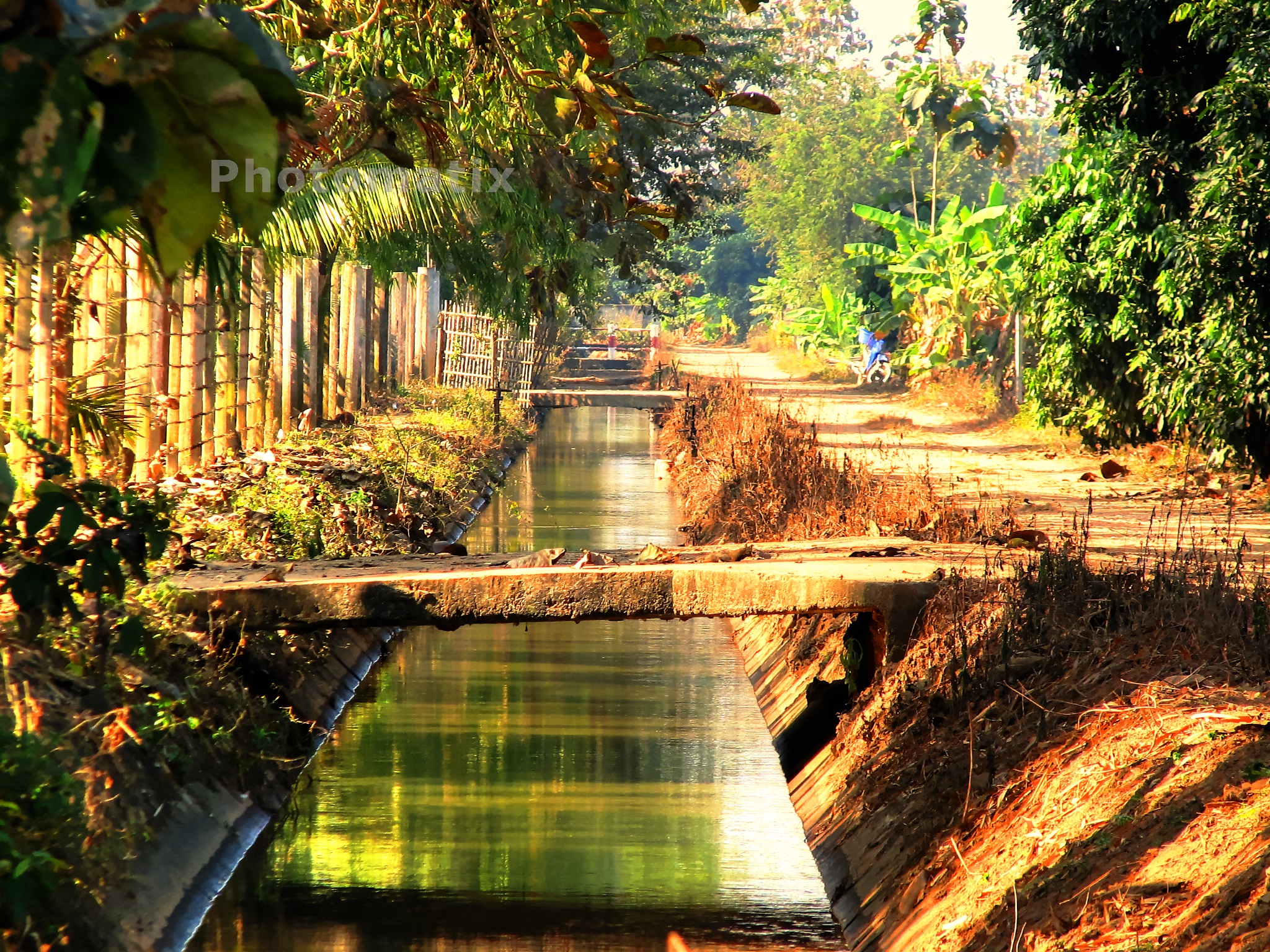
Growing potatoes in Thailand 1961 to 2019
Potatoes require a cooler climate so are only grown in three northern provinces Tak, Chiang Mai, and Chiang Rai.
It is thought that potatoes were first brought to Thailand from Burma or China in the nineteenth century. Other varieties were imported from the USA and the cultivar Bintje which is good for chips (crisps) and French Fries, was first imported from the Netherlands in 1955.
Potato production in the country was stable with little growth between 1960 and 1990. The growth over the next ten years was remarkable.
Since 2014, Thailand Potatoes Production rose 5.3% year on year. In 2019, the country was number 99 among other countries in Potatoes Production at 128,077 Metric Tons. Thailand is overtaken by Lesotho, which was number 98 with 133,122 Metric Tons and is followed by Cuba with 127,141 Metric Tons. China lead the ranking with 91,402,091.85 Metric Tons in 2019, that is +1.2% versus 2018. India, Ukraine and Russia respectively ranked number 2, 3 and 4 in this ranking. Senegal recorded the best 5 years average growth at +26.2% per year, while Laos witnessed the worst performance at -39.4% per year.
NationMaster
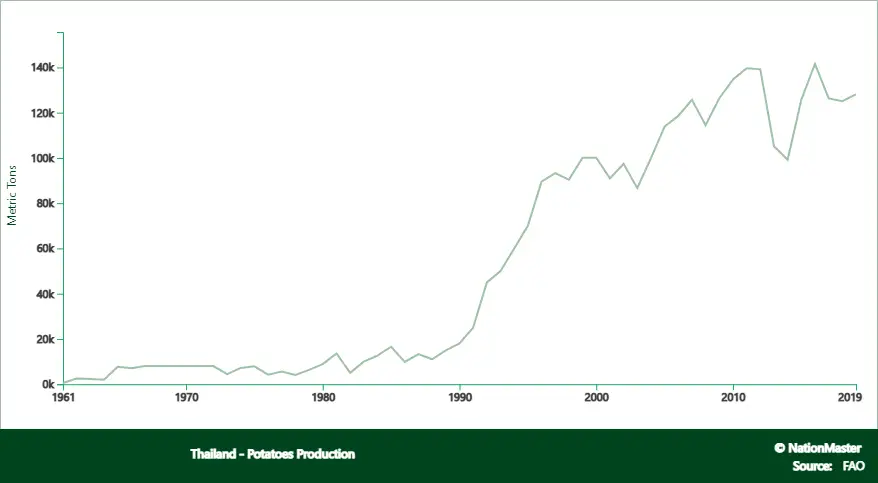
Poor air quality doesn’t seem to affect potatoes in Thailand
Despite numerous Government warnings about forest fires and pollution, burning is prevalent. And the air quality is poor, at times worse than China’s mega-cities of Shanghai and Beijing. However, on the plus side, when the potatoes are being harvested, it always looks like it will be another bumper crop. Even though it may seem that the poor air has not had a detrimental effect, I am not convinced. (Click images to enlarge)
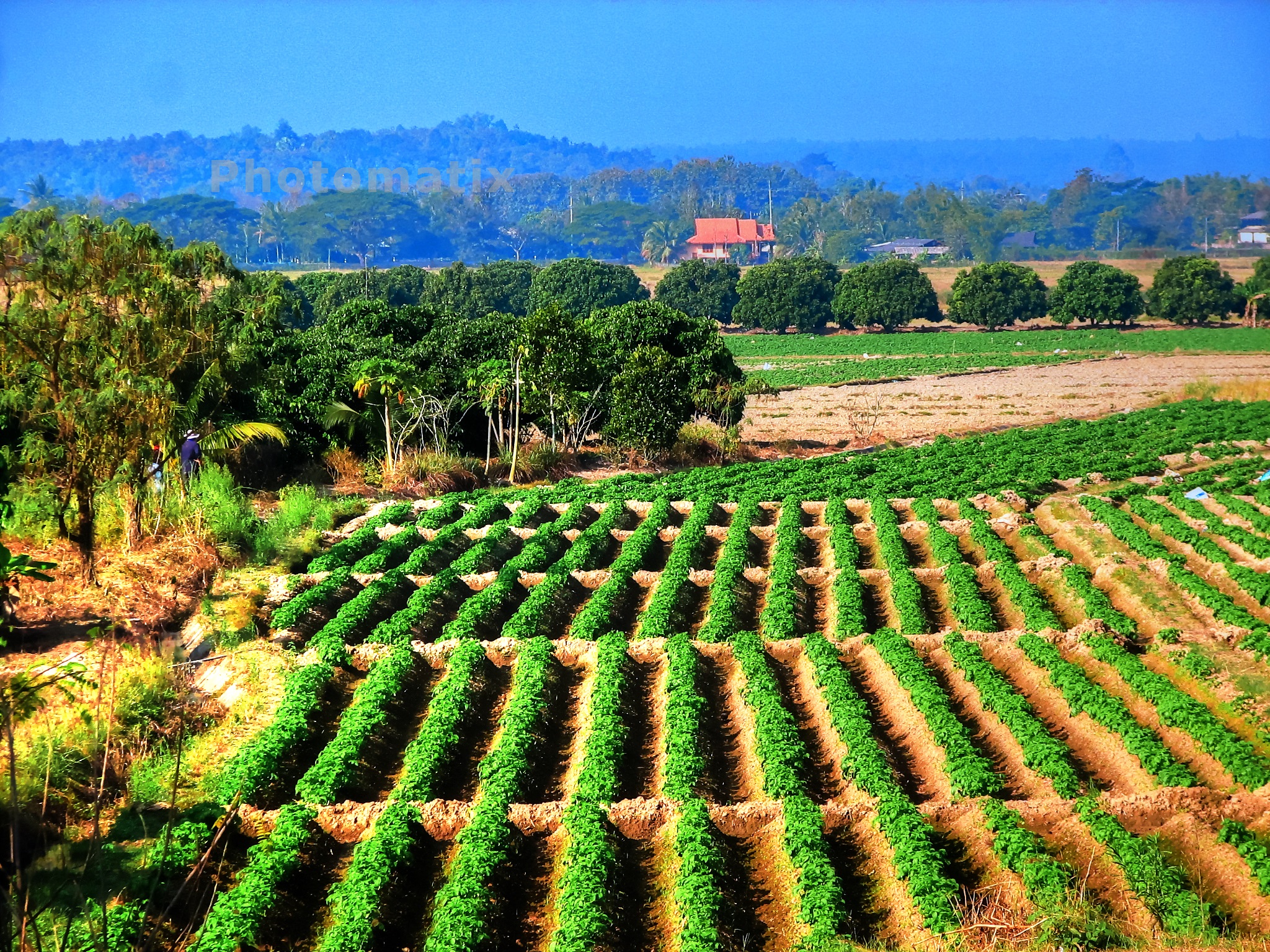
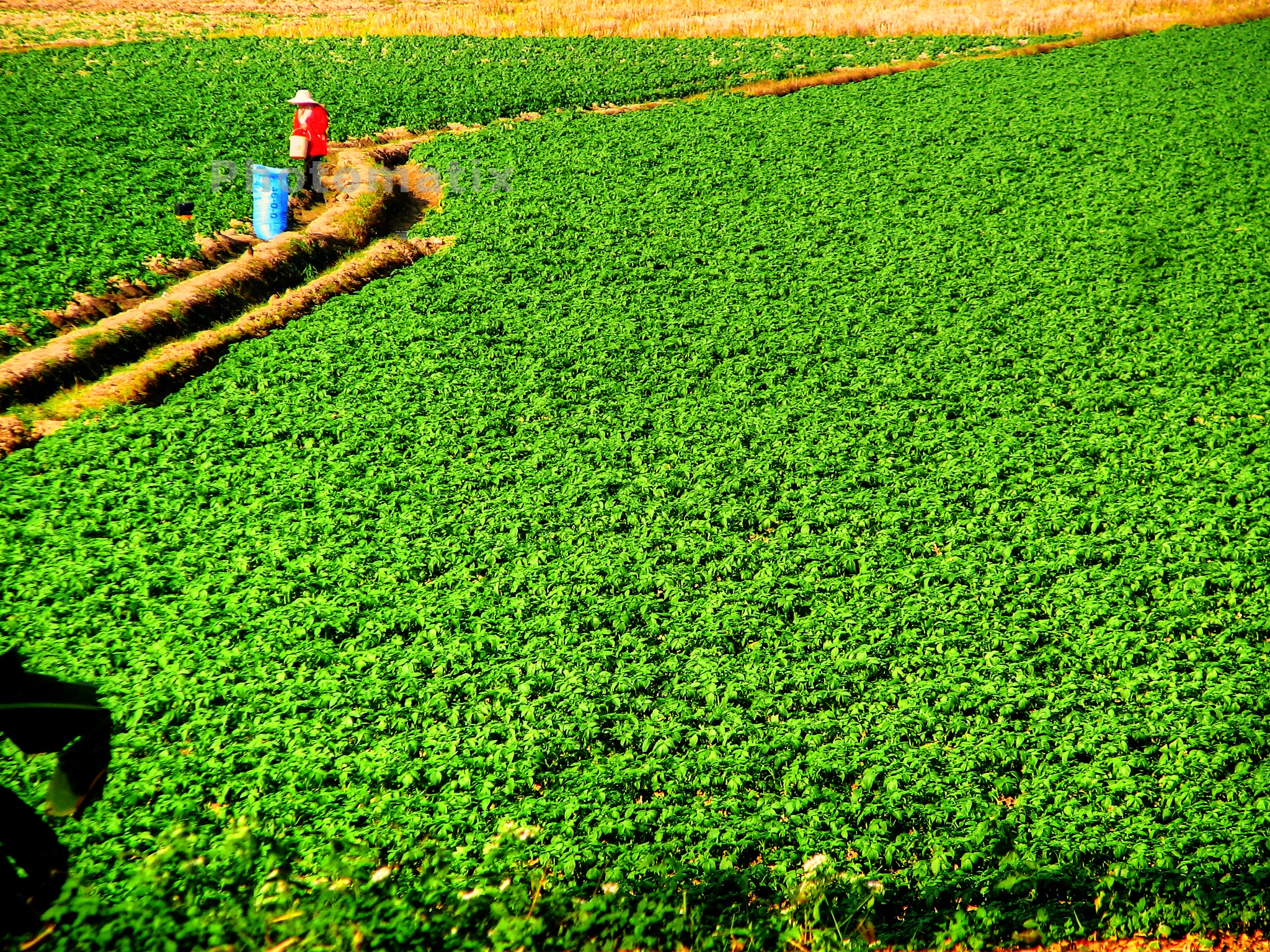
Potato Chips for Asia
Farmers in my village seem to produce more spuds than MacDonald’s, KFC and Lays combined could sell. Chip pans in the villages sizzle as they cook mouth-watering home-made potato chips. The local markets soon are packed with monster bags of the best potato chips you could ever imagine.
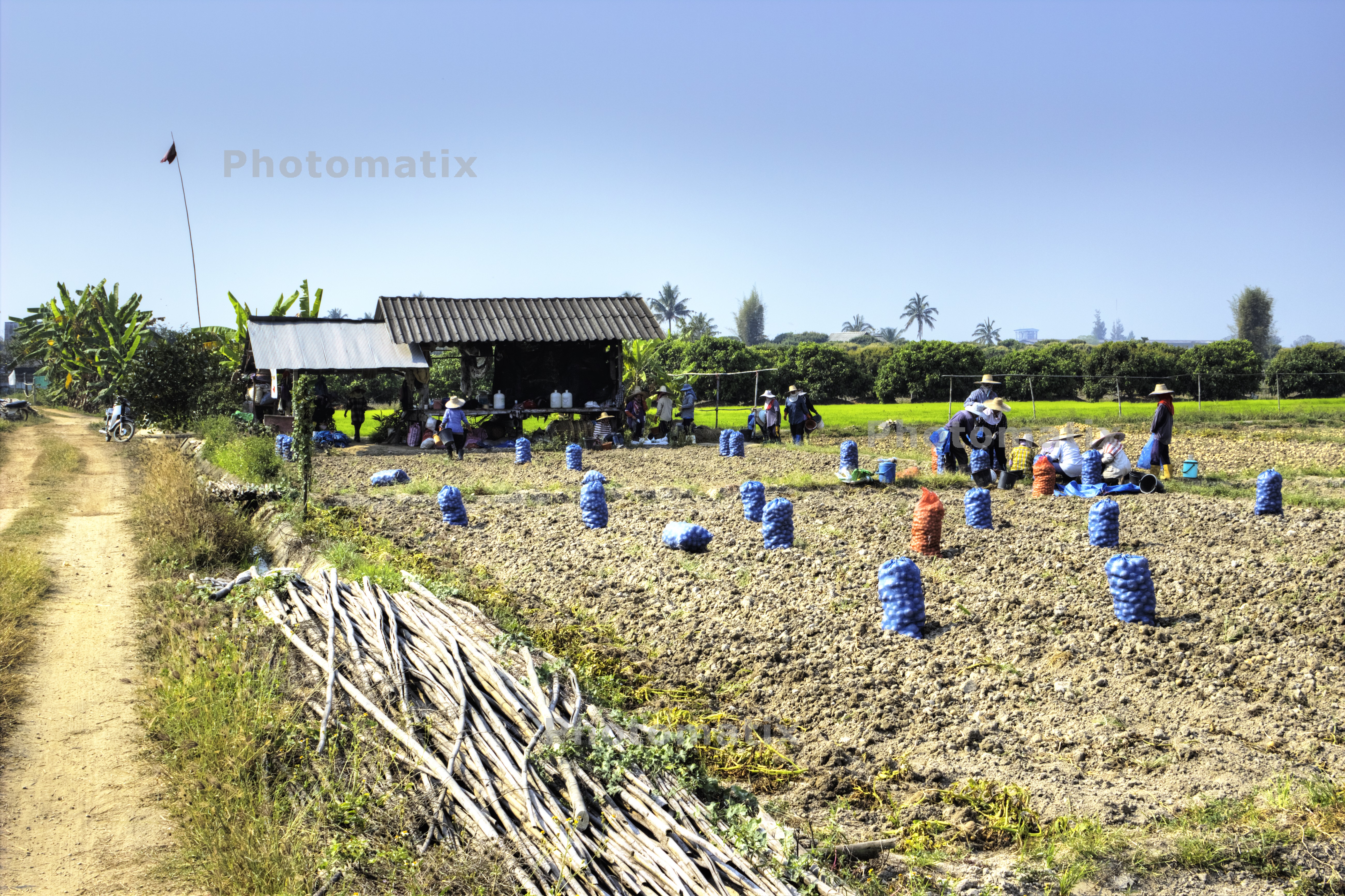
What more could an ancient Brit weaned on Smith’s crisps with the salt separately wrapped in a little blue bag, ever want?
As soon as the potatoes are harvested and sent to market, the fields will be ploughed and flooded in preparation for the next rice crop. And the cycle will start all over again.



